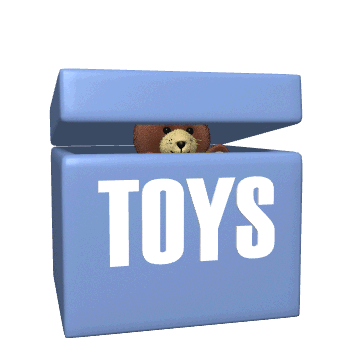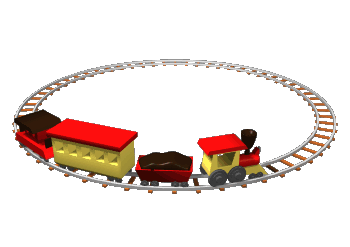
Salty Sam’s Fun Blog for Children
Number 307
Diamonds
Hello Everyone

lt was a bit chilly in my lighthouse home this week, which is not surprising seeing as we are in the middle of winter.
As l was putting some coal into my pot-bellied stove and noticing it shining in the firelight, it made me think about how coal is made of a similar material to diamonds. That is a strange thought, isn’t it? But it is true.
Both coal and diamonds are made of carbon.
There are other things made from carbon as well, like graphite.
You can see coal seams in the picture at the top of the page.
Most of the time they are underground so you can’t see them in this way.
When you think of diamonds, you might think of gorgeous, sparkly rings and necklaces, but actually diamonds don’t look that spectacular when they are dug out of the ground. ln fact, they look very different.
The raw materials dug out of the ground – or even mines, need to be processed before they can be used to make beautiful jewellery.
Some diamonds may even have come from asteroids deposited on Earth from space or meteor impact craters where heat and pressure created the conditions to form tiny diamonds.
The best diamonds are made into stunning jewellery.
The people who cut the diamonds into beautiful shapes are extremely skilled and spend an extraordinarily long time studying the stone before they cut it, because the best diamonds are very, very expensive – and they don’t want to make a mistake.
These diamonds are called gem-grade diamonds.
However, 80% of diamonds are used in drilling bits, quarry tools and the cutting edge of scalpels; which are the knives that surgeons use during operations.
These diamonds are called industrial-grade diamonds; although gem-grade diamonds can be used to make surgical instruments.
Diamonds are known to be the hardest material that we have. They are popular for engagement rings that are designed to be worn every day.
The name comes from a Greek word which means ‘untamed’ or ‘unbreakable’.
Diamonds can be called blue, yellow, green, pink, purple, orange, red or even brown. But usually when we look at a cut and polished diamond we think that it contains all the colours of the rainbow as it sparkles and reflects the light.
Diamonds are formed deep in the ground under conditions of great heat and pressure. They take billions of years to form.
They form many miles underground but are brought closer to the surface by volcanic activity.
The magma spewed up by volcanoes then cools and forms what are known as igneous rocks. The diamonds are mined from these ‘volcanic pipes’.
Occasionally, diamonds are formed from compressed coal, but this is very rare.
Almost all diamonds are formed at depths much further down than coal deposits.
Coal is made from prehistoric plants.
We know that diamonds have been mined in lndia for thousands of years where they were treasured as religious icons (things to be worshipped).
But they became a world-wide commodity in the 1800s when cutting techniques improved and international trade became more widespread.
Antwerp in Belgium is famous for diamond cutting and trading. lt is known as the ‘diamond capital’ of the world. Other important diamond trading places are Amsterdam, New York and London.
lmportant mining areas are in Africa, Australia and South America but diamonds are found in other parts of the world too like Russia and Canada.
Often people like to buy diamonds that come from mines where the workers are treated well – otherwise they can be known as blood diamonds.
There are four qualities a diamond is judged by:
Carat – which means how much it weighs
Cut – how skilfully the diamond has been prepared
Colour
Clarity – how clear the diamond is
lf the diamond has no flaws, it is called a paragon.
A diamond can be cut to have many facets (or sides) because of the way the atoms are joined together. These facets are what makes it seem to sparkle.
Diamonds can form in round shapes or square or what is called teardrop.
Nowadays, diamonds can be formed artificially by replicating the right conditions.
These stones can be called diamante and the most common of these is called cubic zirconia.
Even people can be made into diamonds by using a special process after their death rather than being put in a grave.
Would you like to be made into a diamond one day?
That is a strange thought.
Bye bye everyone – don’t forget to subscribe to my blog!
lf you like my blog, please support it by telling all your friends and followers about it.
Thank you!
And see you again next Fun Friday!
Love and kisses
Salty Sam

www.christina-sinclair.com


Bill and Bob’s Joke of the Week![]()
![]()
Bill: Did you hear that nobody likes Terry’s new girlfriend, but he thinks that they do?
Bob: Why is that then?
Bill: He thinks they think she is a real treasure.
They keep saying, “Where did you dig her up from?”

Salty Sam © Christina Sinclair 2015
Unauthorized use and/or duplication of material from this blog without express and written permission from this blog’s author and owner is strictly prohibited.
Links may be used to www.christina-sinclair.com

Picture Gallery


Bullionaireselite.com


 THE SALTY SAM NEWS DESK
THE SALTY SAM NEWS DESK

Happy New Year everyone!!!

Welcome to another year of my blog posts.
There will be lots of lovely cute and colourful projects for you to make on the posts again this year.
There are lots of projects that will just require small quantities of materials so if you have lots of scraps of plastic canvas and very small balls of yarn in your cupboards there will be lots of opportunities to use them up in the coming months.
If you haven’t, and your local shop has a yarn sale this January that you can get to with some gorgeous colours of double knitting yarn for sale – stock up!

Anyway, back to this week…
My family all spent Christmas in their own houses. We thought it was the best decision to make.
We will have an ‘It’s All Clear’ party later in the year to make up for it – and have a massive family get together then.
Bill and Bob had to tell me about the presents they got over the phone, and everything they ate as well; I don’t know where they put it all!

Yesterday, Auntie Alice was in her house making supper.
She had not been to the shops for a while and was running short of food.
Auntie Alice managed to find some dried-up sultanas in the bottom of a jar in the back of a kitchen cupboard and put them together with a handful of left-over nuts.
She spread these over a sheet of puff-pastry together with a few drops of almond essence and vanilla essence and a couple of very large spoons full of sugar.
She rolled the pastry up and put it on a baking sheet.
After half an hour in a moderate oven we had a lovely, hot pudding to eat.
It was really tasty and the old dried-up sultanas had become plump and succulent again.
How clever! Auntie Alice is a diamond!
When she took the roll out of the oven she laughed – because there was a funny, little sultana face looking at her from the end of the roll – look…


*********************
TO ADVERTISE ON THIS BLOG
PLEASE CONTACT:
christina.sinclair.ads@aol.co.uk
*********************


Quick Quiz
What colours are these gems usually?
- rubies
- sapphires
- emeralds




lt’s the Weekend!

HOW TO MAKE A SPELLlNG GAME
Here is a game you can make to help you with spelling and counting.
You need to play with at least one friend so that you can compete against each other.
You will need 1 sheet of 7 mesh 10.5 by 13.5 inches/26.7 by 34.3cm
First cut 30 panels that are 8 x 8 holes.
You will make 5 dice.
Three will have letters on and two will have numbers on.
One letter die will have vowels on them and two dice will have consonants on them.
Use as many colours as you like. The dice in the photographs have only two colours but you can make really colourful ones with lots of different colours using up scraps of yarn that you have available.
The letters are made by using cross stitch – make sure your crosses are all worked in the same direction in order to keep your work neat.
The numbers dice should have their numbers placed so that the opposite panels add up to 7 – but if you make a mistake when you put the panels together, don’t worry, the game will still work.

A die net
The letters on the dice will be as follows:-
A E E I O U
N T S M C F
L H R D P G
There are two Es because E is the most common letter in the English language.
The dice contain the most commonly used letters in the English language.
Putting C, S and T on one die and H on the other will give you CH, TH and SH.
The letter frequency in the English language is as follows:-
e t a o i n s r h l d c u m f p g w y b v k x j q z
The players will also need a piece of paper to write their words down.
Make a time limit on making up each word if you like.
Don’t allow anyone to make the same word twice.
Play to when everyone has made twenty words then add up the scores.
You can make the game longer if you want to of course.
This is the way you play the game:-
Throw the dice and try and make a word including all of the letters on the letter dice.
If you get, for example, T and I and N, you could make the word TIN and you will get 3 points. But if you made the word NIGHT you would get 5 points, TONIGHT would get you 7 points.
If you make ANTIESTABLISHMENTARIANISM, you will probably be well on your way to winning the game! ![]()
If you are unsure about your spelling, you can use a dictionary to help you.
Then add the numbers from the numbers dice to the points you have already gained from the word you have made.
Keep a list of points for all the players so that you can add them up at the end and know who has won.



Please note that the material on this blog is for personal use and for use in classrooms only.
It is a copyright infringement and, therefore, illegal under international law to sell items made with these patterns.
Use of the toys and projects is at your own risk.
©Christina Sinclair Designs 2015


Quick Quiz Answers
- rubies are usually red
- sapphires are usually blue
- emeralds are usually green
There are many more precious and semi-precious stones
that can be put into jewellery



